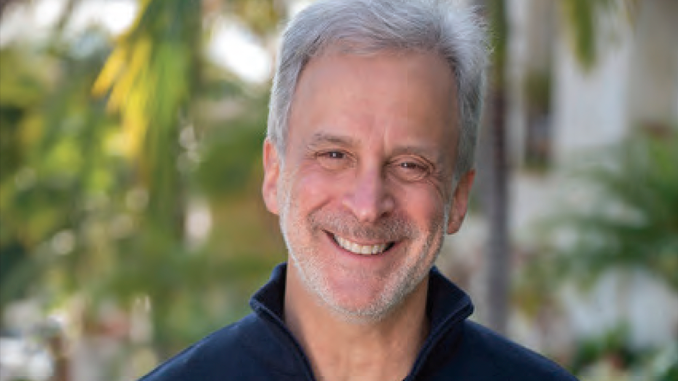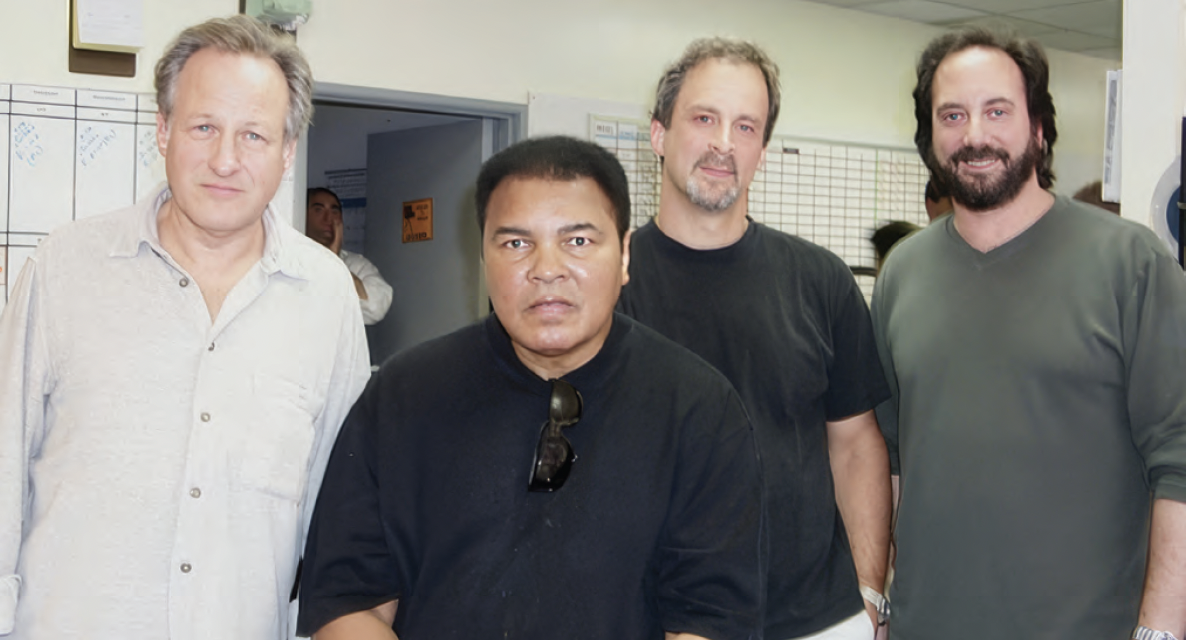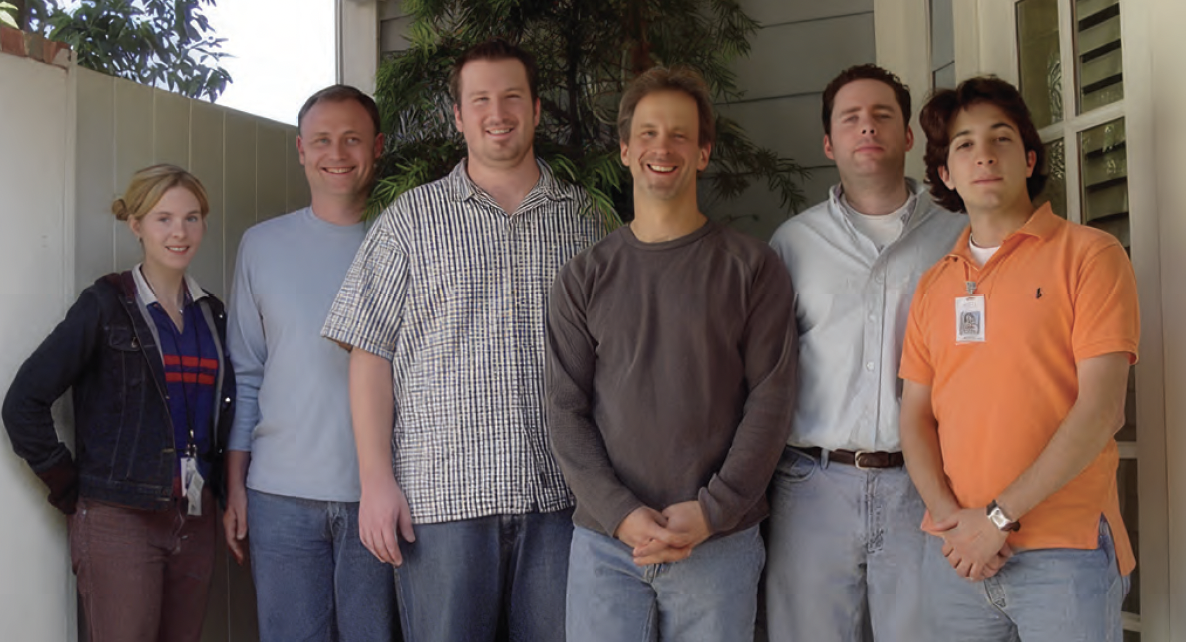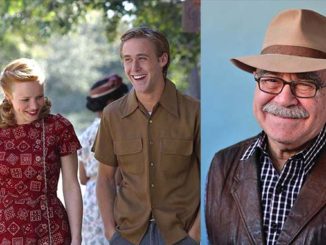
By Su Fang Tham
Leaving pre-med and setting out for the edit bay isn’t the most common career path, but it’s worked out pretty well for William Goldenberg, ACE.
“I hated the first year of pre-med,” said Goldenberg, a picture editor known for his work on numerous films, including “The Imitation Game” (2014), “Zero Dark Thirty” (2012), and “Heat” (1995).
At the time, he was attending Temple University, “which has a very good film school and I love the movies. So I transferred to the film school,” said Goldenberg, who won an Academy Award for “Argo,” the Ben Affleck-directed thriller about a real-life daring rescue during the 1979 Iran hostage crisis. Over the past 17 years, he has become Affleck’s go-to editor, with “Air” marking their fourth collaboration. Starring Matt Damon, Affleck, Viola Davis, and Jason Bateman, the Nike-themed biographical sports drama premiered last year and has performed well on Amazon Prime.
His college experience set up Goldenberg’s path.
“My professor encouraged me a lot and suggested that I move to California with the idea of becoming a film editor,” he recalled. When Hill-Mandelker Films was going to shoot a made-for-TV movie, “High School U.S.A.” (1983), he seized the opportunity for his first break. “They asked me if I wanted to be a set PA and I said, ‘Well, I’d really love to be the apprentice editor.’ And they said yes – shockingly! I would never tell anybody to [try] that, but I was naïve.”
That bold move soon connected him with Kathy Virkler (“Heat”), who “was an amazing first assistant and taught me everything she knew about assisting.” She recommended him to Tom Finan (“Platoon”), who was friends with Nancy Frazen, the assistant editor on “The Breakfast Club” (1985), which is how he ended up as the apprentice film editor on the John Hughes classic.

Goldenberg’s career gained even more ground once he met Michael Kahn, who has edited all of Steven Spielberg’s films since 1977 (except “E.T. the Extra-Terrestrial”).
“Michael became a mentor and taught me everything about editing. It was the best graduate school – he taught me the theory, methodology, politics, how to handle myself with executives, and how to take criticism, which was an incredibly important lesson,” he said.
He would work as Kahn’s first assistant for four years before gaining his first main title credit, on Frank Marshall’s Andes plane crash survival drama, “Alive” (1993). “Michael shared a main title credit with me, which was incredibly generous. He gave my career a tremendous boost — I owe him so much. After that, I went off and started cutting on my own.”
Goldenberg’s C.V. covers a long list of projects, ranging from big-budget actioners like “6 Underground” (2019) and Michael Bay’s “Transformers” films to quieter dramas like “Unbroken” (2014) and “Seabiscuit” (2003).

“The Breakfast Club” (with Ally Sheedy and Molly Ringwald). PHOTO: PHOTOFEST
The Bay films tend to be heavier on visual effects, so “it keeps me abreast of the most current visual effects technology. Whether it’s cameras or the way Michael shoots, he gets such extraordinary footage that it requires a different style of editing. With how quickly visual effects technology changes, if you don’t do one for three years, the whole world is different.” Not limiting himself to certain genres also allows him to bring new techniques to other projects. “After I did ‘Gone Baby Gone’ with Ben, I used some of those techniques on ‘Transformers: Dark of the Moon.’ Stretching myself stylistically makes me a better editor, so I try to do as many different genres as possible.”
All of this would ultimately lead Affleck to Goldenberg when the former was looking for someone to replace the original editor on “Gone Baby Gone” (2007). A fan of the Michael Mann films that Goldenberg had worked on – “Heat” (1995) and “The Insider” (1999) – Affleck reached out to him. “I didn’t use the old cut,” said Goldenberg. “I just started over again and recut the whole movie from scratch. It came out really great and we just loved working together,” he said of his first collaboration with Affleck.
Having cut four of Affleck’s five features now, he is very impressed with the director’s keen sense of what editorial requires. “Ben knows a lot about editing. Like any good director, he’s shooting for the editing room. He knows the final rewrite of the movie is done in the editing room. So he is very good about shooting the pieces that I need to tell the story in the best possible way.”

Based on Alex Convery’s spec script, “Air” chronicles how Nike basketball talent scout Sonny Vaccaro (Damon) turned the Oregon-based company around by signing Chicago Bulls rookie, Michael Jordan, in a groundbreaking deal in 1984 because it included a portion of sales from the Jordan line. To entice him — a die-hard Adidas fan — Nike designed a shoe around him, which would become one of the most famous sneaker brands in the world, Air Jordan.
Although Sonny was certain that Jordan would become the next star in basketball, he first had to convince Nike CEO and founder Phil Knight (Affleck), marketing chief Rob Strasser (Bateman), director of athlete relations Howard White (Chris Tucker), and Jordan’s agent, David Falk (Chris Messina). They were also up against much bigger competitors in Adidas and Converse, both of which were also trying to snag Jordan.
Shot over 23 days on prototype ARRI Alexa 35 by Oscar-winning cinematographer Robert Richardson (“The Aviator”), the visual palette had to match the eye-popping colors common in 1984-era design while conveying Sonny and Nike’s desperation and the sense of urgency. “It’s about pop culture, sports, following your dreams, so it was shot fast-paced, a lot of Steadicam, and quick cutting,” Goldenberg said. “We wanted it to feel like a race against time. Sonny only had limited time to sign Jordan, who was only considering Adidas and Converse; Nike wasn’t even a third choice. So we made it feel like he was pushing up against the clock and the system. They [Affleck and Richardson] shot it that way, and I cut it that way, giving it that electric energy feel.”
‘Air’ ‘was shot fast- paced, like a race against time.’
Starting with the opening montage, Affleck firmly sets the story in 1984 with wall-to-wall nostalgia-baiting music from the era: there were 45 needle drops in total, including 23 songs and 18 licensed scores from other films. “It was Ben’s idea to put a lot of needle drops to help tell the story emotionally, but also to make you feel like you were in the ‘80s,” Goldenberg said of the work he did with music editor Cory Milano. Throughout the film, Jordan (played in brief glimpses by Damian Young) is never directly shown, but we see the real Jordan in flashes of archival footage. “Ben felt like it would distract from the central focus of this story, which is about Sonny. Also, in the scene where the Jordans meet everyone in the Nike boardroom, we see the real Michael in the flash forward snippets. So, it would have been hard to include that and show an actor playing Michael. It just worked out better for the film.”
But before anything could proceed, Sonny had to win over Jordan’s mother, Deloris (Davis). The two share a couple of intense yet heartfelt conversations while negotiating the fate of a young man on the cusp of unfathomable success. “Ben got himself into the camera union, and when he wasn’t acting, he operated a third camera while Bob was shooting with two cameras. Ben shot in a slightly different style — mostly handheld to give you the feeling of being dropped into Sonny’s world, like a verité feel, almost as if we’re watching everything from Sonny’s shoulder.” When Sonny and Deloris talk in her backyard (after he drove all the way to North Carolina to sneak a meeting with her), the close-ups are mostly what Affleck shot, where “you’re almost seeing into their souls, with the cameras right up against their faces. Panning back and forth between those perspectives helped with the pacing and made it feel like we’re right there with Sonny,” Goldenberg said.
Several crucial scenes take place over telephone calls between Sonny and David, and another with Deloris towards the end. Affleck chose to shoot these phone calls simultaneously, with three cameras on Messina and two on Damon. “Those scenes would never be what they are without doing it that way. The actors worked off each other as if they’re in the same room — the body language, rolling your eyes, or pacing around. So you get that spontaneity and the real reactions. We did a ton of phone calls in ‘The Insider,’ also, with Al Pacino and Russell Crowe on the phone together. The ones that were shot simultaneously were always so electric.”

When the Jordans visit Nike HQ for the official offer, Sonny delivers a riveting monologue. Originally, that scene was mostly his voiceover accompanied by Jordan’s highlight reel. “But Ben and I thought that Matt was so good, why are we cutting away from him? That’s when we realized it needed to be just snapshots of Michael’s reel to give the audience glimpses of how the future would unfold, but with much more focus on Sonny so that we can keep the audience in the room,” Goldenberg said. “At that point, Matt is looking right at the acamera and sort of pitching to the audience. That’s one of the things that not seeing Michael directly in the film did: You felt like, in that moment, we’re Michael and Matt’s pitching us.”
On the other hand, showing how Jordan felt during all this without seeing his face was challenging, too. Goldenberg continued, “I was relying on body language — Michael shifting in his seat or resting a chin on his hand, looking bored — and using the mom and dad’s reactions to know what Michael was thinking. So there was a lot of nonverbal storytelling, which was challenging but really fun to do.”
Once the meeting was over, the Nike team had to wait for a few days while the Jordans made their decision. Originally, it went straight from the end of the meeting to Howard’s call informing Sonny that the Jordans has gone with Adidas. There was no passage of time to convey any dramatic tension or sense of jeopardy. “When I realized it didn’t work, Ben went out with Matt and shot the scenes where Sonny was getting his dinner at the 7-Eleven, looking at the phone, and pacing around waiting for the call. It worked beautifully, but it wasn’t there originally. Since I stay up to camera [edit in a single day what was shot the previous day], I was able to show them any issues right away,” Goldenberg said. “Usually either Ben or Matt would think of something and run out to shoot something right away or the next morning. Everything was so immediate, which was so much fun when we can solve problems on the spot.”
For his next project, Goldenberg is set to direct “Unstoppable: The Anthony Robles Story,” a drama based on the 2011 NCAA wrestling national championship winner who was born with one leg. Starring Jharrel Jerome in the titular role and with Jennifer Lopez playing his mother, the story is also “about overcoming incredible obstacles to become a champion, both in life and in sports,” he said of his upcoming directorial debut with Artists Equity and Amazon MGM Studios.
“Anthony is a very talented and charismatic guy. His is an uplifting story that shows you the power of positive thinking and hard work.”






